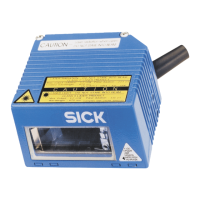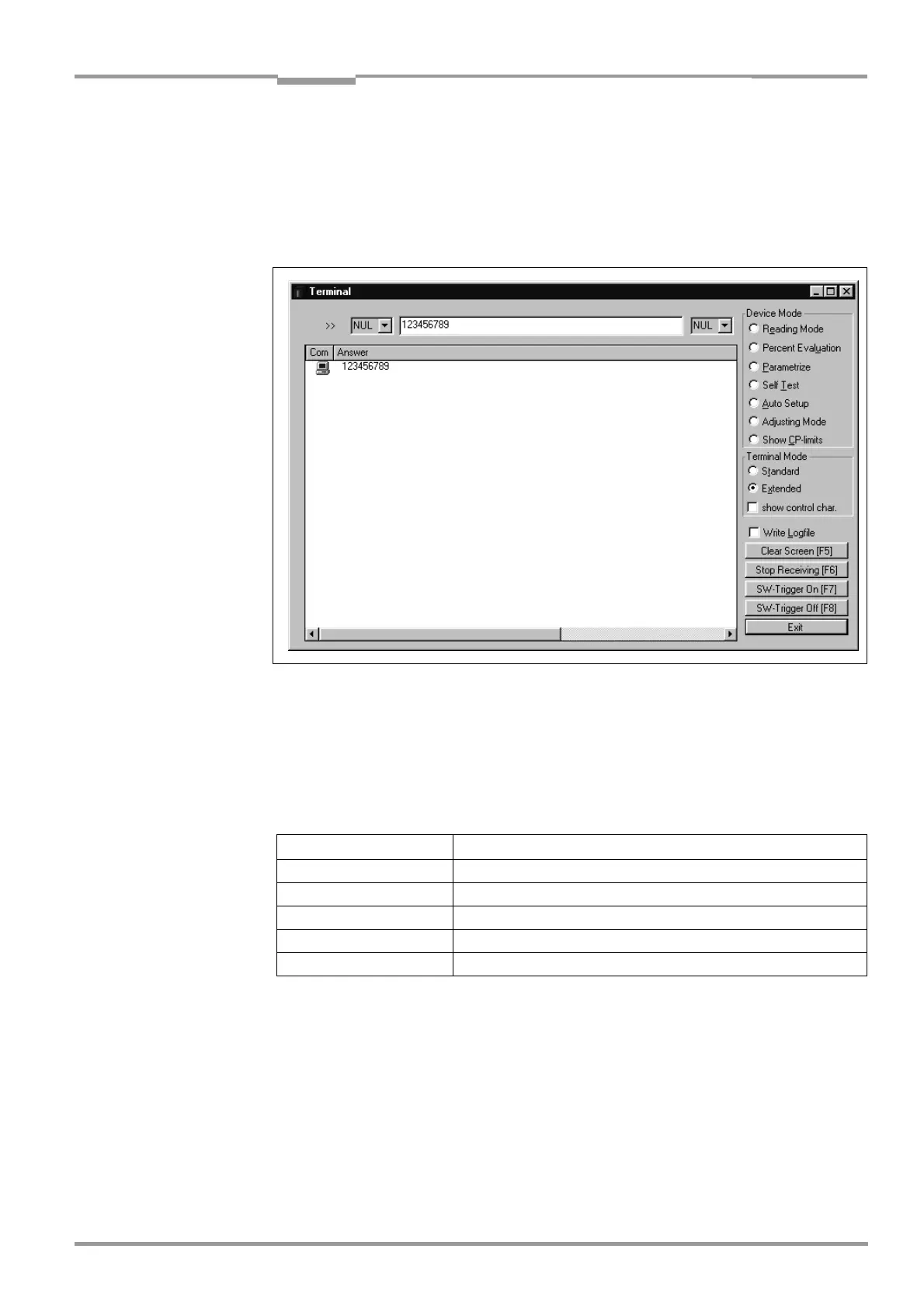Operating Instructions Chapter 10
CLV 42x bar code scanner
Appendix
8 009 981/O078/16-08-2004 © SICK AG · Division Auto Ident · Germany · All rights reserved 10-33
5. Press [RETURN] or [ENTER].
The CLV then interprets all further characters as a new data string.
CLV Setup sends the character string to the CLV and deletes the entry in the text field.
The CLV does not send an echo.
6. Once the active reading pulse has ended, the CLV sends the data received from the PC
to the host via the host interface.
Entering a bar code using a terminal/PC keyboard
1. Connect the terminal/PC with Terminal Emulation program to the terminal interface on
the CLV (via CDB 420 or CDM 420). See
Chapter 5.5.6 Connecting the PC, Page 5-7.
For the pin assignment, see Chapter 5.3 Connector pin assignment, Page 5-2.
2. Set the communication parameters and data output format as shown in Table 10-6.
3. Enter the data content of the bar code via the keyboard.
The terminal sends the individual characters to the CLV immediately.
Use the backspace key to correct input errors.
4. Terminate the data content with the control character <CR>.
The CLV then interprets all further characters as a new data string.
The CLV ignores other control characters. The data content itself must not contain any
control characters.
5. Once the active reading pulse has ended, the CLV sends the data received from the PC
to the host via the host interface.
Fig. 10-13: CLV Setup: auxiliary input via the terminal emulator
Parameter Value
Data transfer rate 9,600 bd
Data bits 8
Parity none
Stop bits 1
Data output format Data terminator, e.g. 1234 CR
Table 10-6: Communication parameters on the terminal/PC for the auxiliary input

